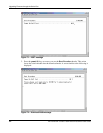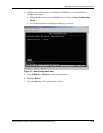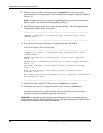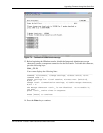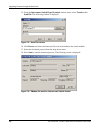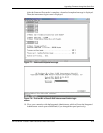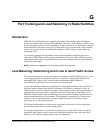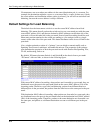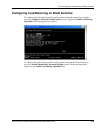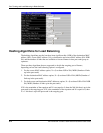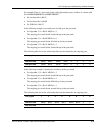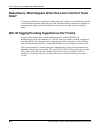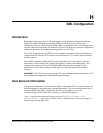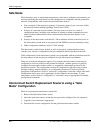
G
Port Trunking and Load Balancing in Blade Switches
Introduction
IEEE 802.3ad and EtherChannel compatible port trunks allow multiple physical Ethernet
links to be combined into one logical channel/trunk. This allows load sharing of traffic among
the links in the port trunk as well as redundancy in the event that one or more links in the port
trunk should fail. Port trunks can be used to interconnect local-area network (LAN) switches,
routers, servers, and clients via unshielded twisted-pair (UTP) wiring or single-mode and
multi-mode fiber.
A port trunk aggregates the bandwidth of up to eight compatibly configured ports into a
single logical link. Blade switches support a maximum of six port trunks. All Ethernet ports
support port trunks with no requirement that the ports be contiguous, but do require that they
must be the same speed.
NOTE: Dynamic Link Aggregation Control Protocol (LACP) is not supported.
Load Balancing: Determining which Link to Send Traffic Across
The load-balancing policy (frame distribution) can be based on MAC address (Layer 2). You
can configure these frame distribution policies to be based on source MAC address (SA),
destination MAC address (DA), or both source and destination MAC addresses
(SA XOR DA) in the frame to be forwarded across the port trunk.
A port trunk distributes frames across the links by reducing the last three lower order bits of
the binary pattern formed from the MAC addresses in the frame to a numerical value. In
addition, the port trunk calculates the modulus of that numerical value against the number of
available links in that port trunk, to determine which one of the links to send traffic across.
IEEE 802.3ad/Port trunk frame distribution policies are based on hashing algorithms that use
formulas mentioned below with examples. The algorithm is deterministic; given the same
addresses and session information, you always hash to the same port in the port trunk,
preventing out-of-order packet delivery.
The selected mode applies to all port trunks configured on the switch. Use the option that
provides the greatest variety in your configuration.
For example, if the traffic on a port trunk is going only to a single MAC address, using the
destination MAC address always chooses the same link in the port trunk; using the source
addresses or IP addresses might result in better load balancing.
HP ProLiant BL e-Class C-GbE Interconnect Switch User Guide G-1
HP CONFIDENTIAL Codename: DeLorean Part Number: 263682-002 Last Saved On: 2/5/03 10:51 AM




